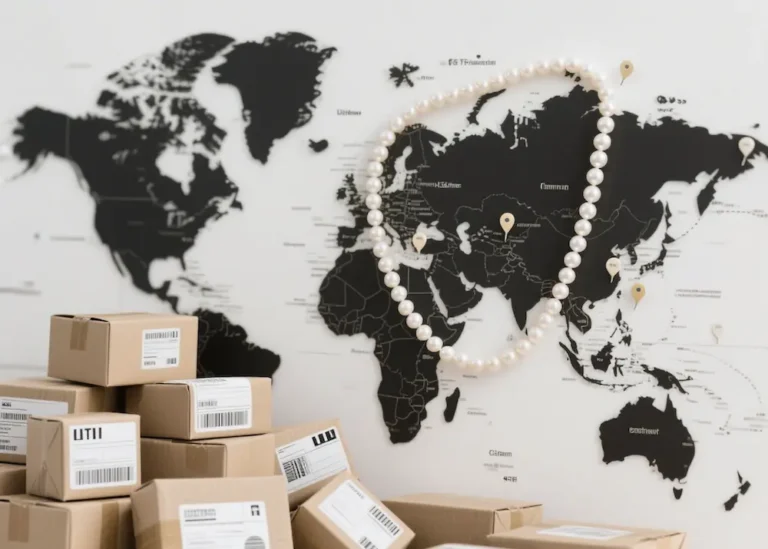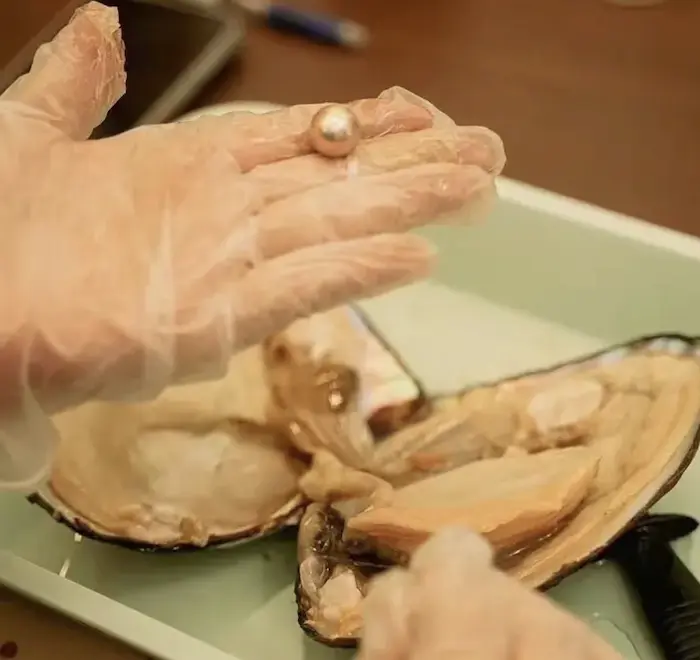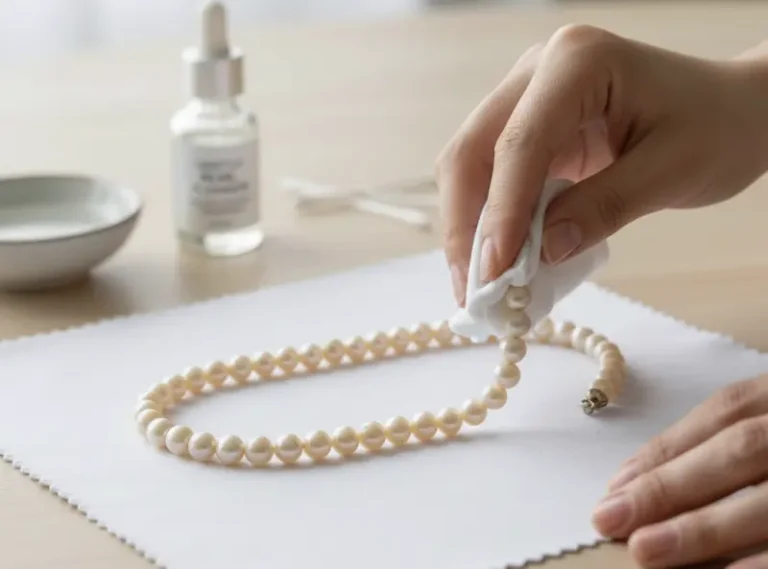For centuries, jewelry lovers have been fascinated by the beautiful range of colors found in freshwater pearls. These stunning freshwater pearl colors offer an incredible palette that rivals even the most precious gemstones! Unlike saltwater pearls, freshwater pearls come in almost every shade imaginable, each one reflecting the pearl’s unique story. From dreamy whites with delicate undertones to vibrant peacock colors that shimmer with an iridescent glow, understanding the colors of freshwater pearls can help you choose jewelry that perfectly expresses your individual style.
The Science Behind Freshwater Pearl Color Formation
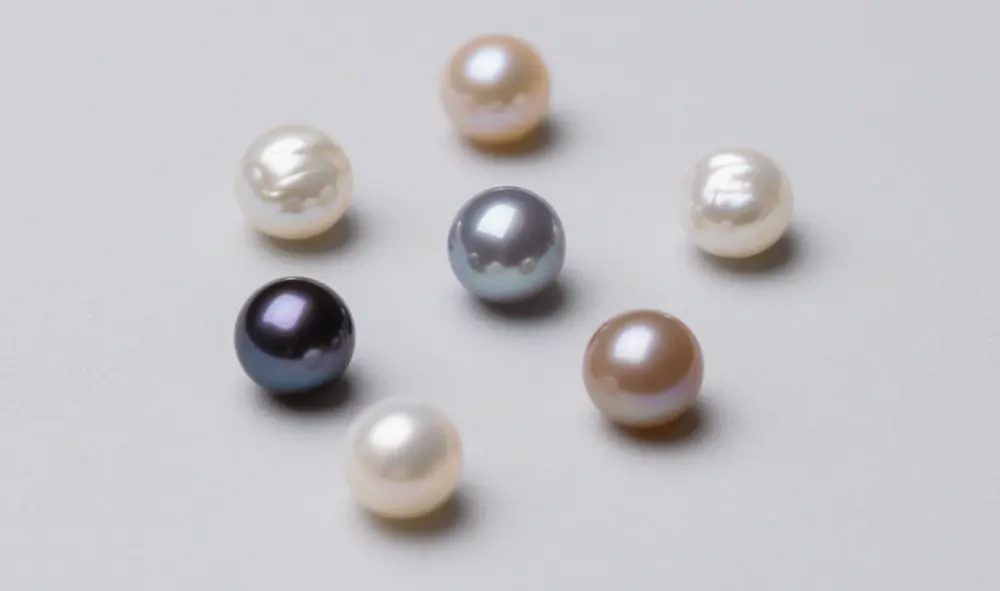
The interesting process that happens inside freshwater mussels gives freshwater pearls their beautiful colors. These amazing animals, turn small annoyances into shiny treasures by covering them with layers of nacre, especially the Hyriopsis cumingii. Aragonite and conchiolin make up nacre, and the color of the pearl depends on a few important things that all work together to give it its own look.
The chemistry of the water plays a major role in determining the color of a freshwater pearl.The minerals in the water, its pH, and seasonal temperature variations all affect the growth and light-reflecting characteristics of the nacre layers. The mussel’s DNA also plays a significant role because different types of mussels, even individual ones, are better at producing specific colors. Lastly, these natural processes are influenced by their surroundings, such as the depth of the water, the strength of the currents, and the availability of food.
Perhaps most intriguingly, the cultivation techniques employed by Pearl Manufacturer operations can subtly influence color development. When the pearls are harvested, how well the water quality is managed, and where the mussels are placed in the freshwater environment all play a role in the range of colors that are produced.
| Color Factor | Influence Level | Primary Impact |
|---|---|---|
| Water Mineral Content | High | Base color tone |
| Mussel Species Genetics | Very High | Color intensity range |
| Cultivation Environment | Medium | Overtone development |
| Harvest Timing | Medium | Luster and color saturation |
| Nacre Layer Thickness | High | Color depth and richness |
5 Popular Freshwater Pearl Colors
1. White Freshwater Pearls: The Timeless Classic
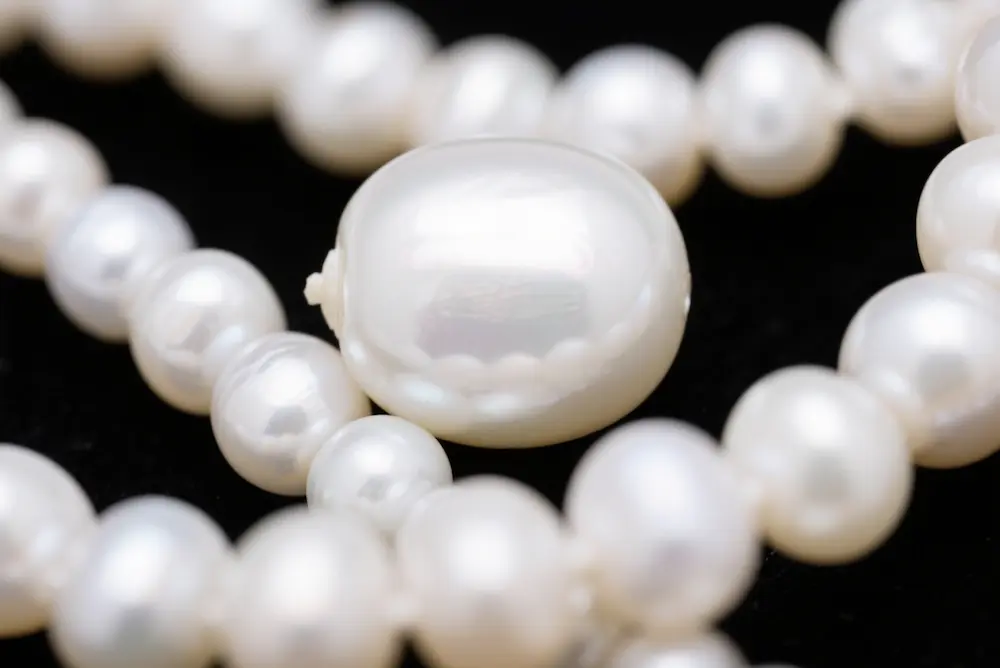
White pearls are still the most popular and work with just about anything. But don’t think of them as just “plain white.” Real white freshwater pearls have subtle hints of other colors, like cool silver, creamy ivory, or even warm rose and champagne. These little differences make each pearl necklace special, and they can be worn with any skin tone or for any event.
Jewelers in the know will tell you that high-quality white freshwater pearls are often better than traditional Akoya pearls, especially when you’re talking about the bigger sizes. When buyers are looking for wholesale pearls, they often find that freshwater pearls give them better value for the money. You don’t have to sacrifice beauty or how long they’ll last. The nacre thickness in quality freshwater pearls typically exceeds that of their saltwater relatives, resulting in enhanced luster and longevity.
2. Pink and Rose: Romance in Pearl Form
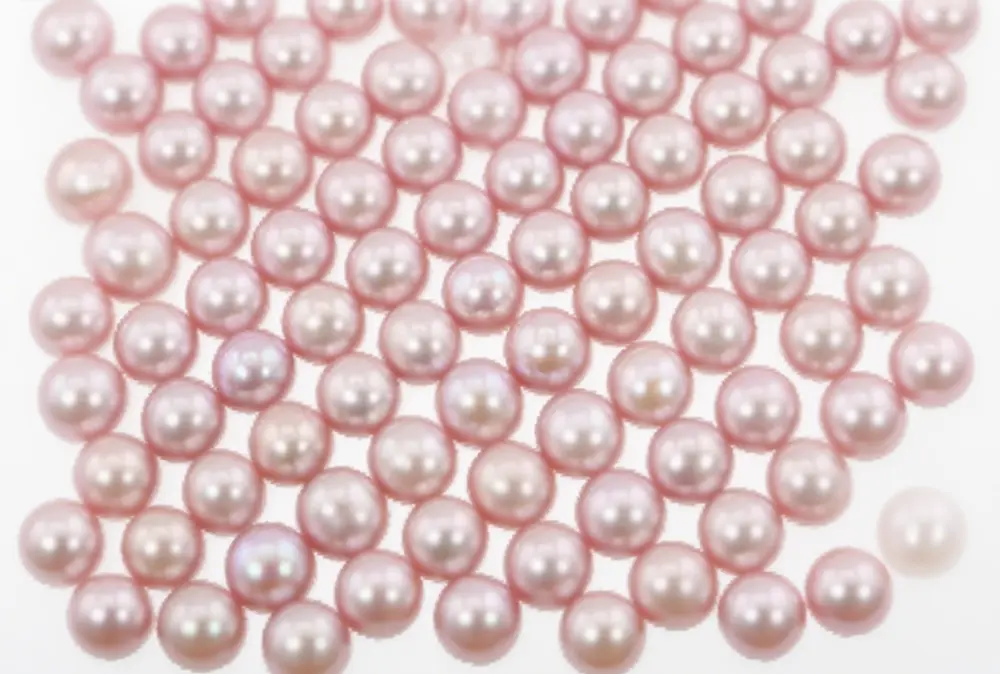
Pink freshwater pearls are definitely one of the most beautiful colors you can find in freshwater pearls. They come in a range of pinks, from really subtle, light blush colors to bolder, more vibrant magenta shades.This color range is amazing! You’ve got baby pink pearls that seem to light up from the inside, peach colors inspired by coral that remind you of sunsets, and deep rose shades that really grab your attention with their richness.
The way a pink freshwater pearl gets its color is pretty cool. The minerals and other natural materials around the mussel where the pearl grows are very important. The warm, soft colors come from iron and certain proteins. The way the nacre layers are arranged—the pearly substance—affects how light reflects off of them, giving each pearl its own pink color.
Jewelry designers today love using pink freshwater pearls because they can be used in so many different ways and add a nice, emotional touch to their work. These naturally pink pearls are cool because nature slowly imparts their color over many years. That means each one has its own unique little differences in shade that you just can’t get with artificial dyeing or mass production. The little differences in each strand of these pearls are what make them so special and unique.
People who care about fashion love pink freshwater pearls because they can be used in so many ways. The light pinks give your everyday look a little class, while the deeper rose-colored ones make a bigger statement and are the main focus when you dress up for a night out.
Understanding Pink Pearl Overtones
| Pink Shade | Common Overtones | Best Occasions |
|---|---|---|
| Baby Pink | Silver, White | Daily wear, office settings |
| Peach Pink | Gold, Cream | Casual outings, spring events |
| Rose Pink | Silver, Lavender | Evening wear, romantic occasions |
| Magenta Pink | Purple, Blue | Statement pieces, artistic events |
3. Lavender: The Sophisticated Alternative
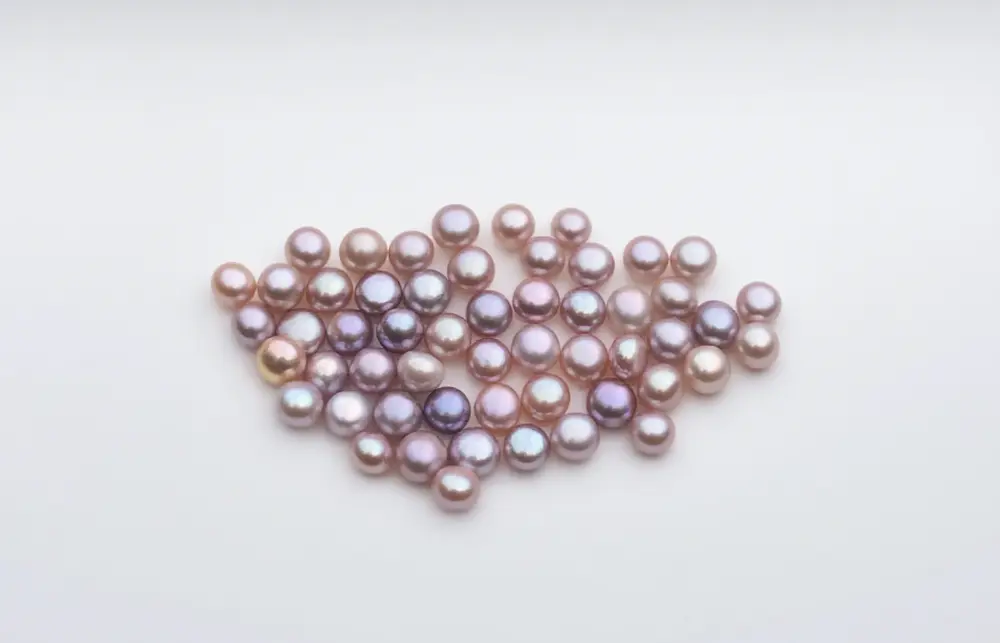
Lavender freshwater pearls are different from other pearls. This dreamy color combines the cool blue with the warm pink to make the pearls look like they’re glowing and changing in different kinds of light. These unique gems are very valuable to collectors and pearl experts because the lavender color is so complex and interesting.
That natural lavender color happens because of a specific mix of tiny elements and growing conditions that don’t come together very often in freshwater. The pearls end up with a dreamy look, shifting between a light purple, a soft blue, and even a silvery gray, depending on how you look at them and the light around them. Because their color is so adaptable, lavender pearls tend to look beautiful on just about anyone.
The best lavender freshwater pearls have a really rich color, almost like you’re seeing different layers deep inside the pearl itself. Jewelers often suggest them to people who want something different from the usual white pearls, but aren’t quite ready for a bolder color.
Because it’s hard to find really amazing lavender freshwater pearls, people who love jewelry are wanting them more and more. And unlike pearls that are colored with treatments or dyes, natural lavender pearls keep their beautiful color forever, which makes them a great investment for serious collectors.
4. Black and Peacock: Drama and Elegance Combined
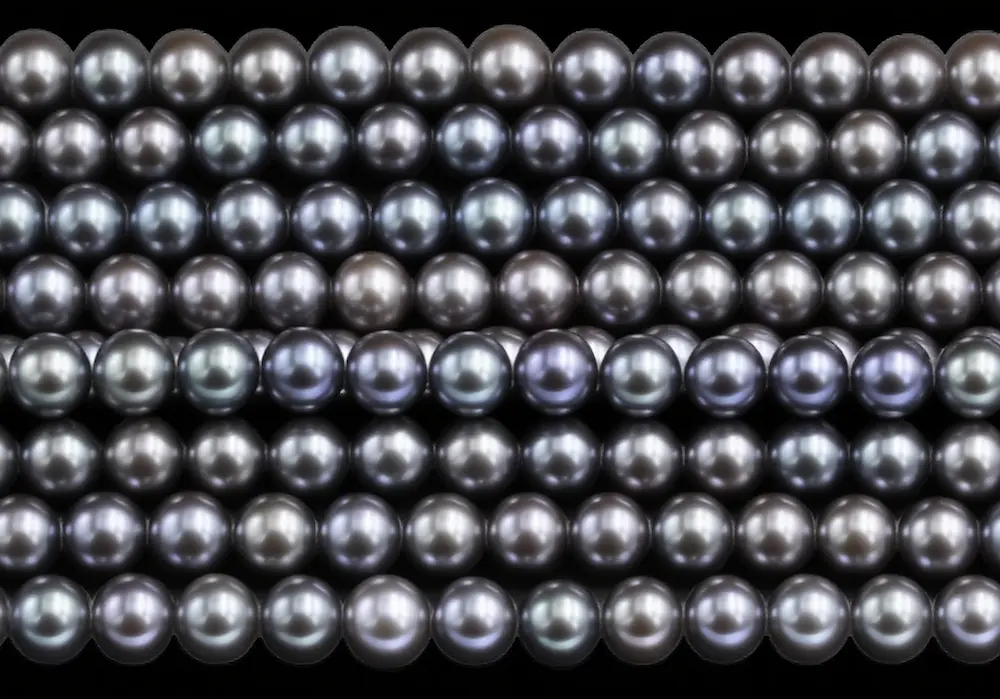
Dark freshwater pearl color is beautiful and dramatic, and they make some of the most eye-catching jewelry today. This freshwater pearl color is very rare. Black and peacock pearls shake up the traditional pearl look while still being beautifully shiny, which is what makes good pearl jewelry so special. These darker colors come from the mussels’ genetics and the environments they live in. This makes the colors in the pearl’s layers richer.
It’s important to know that real black freshwater pearl color is not just artificially darkened. Natural black pearls have slight color variations, from a charcoal gray to a deep purple-black, and they often have a metallic sheen that’s just breathtaking. The most sought-after ones have a rainbow-like shimmer that shifts with the light, showing off greens, blues, and purples.
According to the Gemological Institute of America, the ways they grow dark freshwater pearls to get consistent colors have gotten much better recently. This means that these pearls, which used to be super rare, are now easier for people who love jewelry to get their hands on.
5. Peach and Golden Tones: Warmth and Luxury
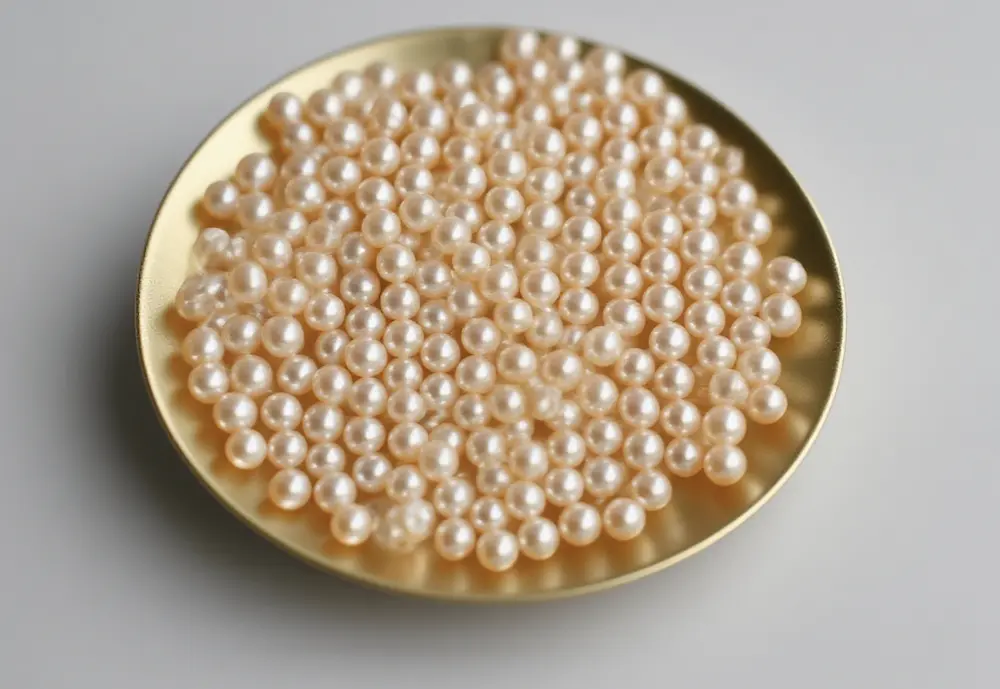
Warm-toned freshwater pearl color comes in a range of colors that remind you of nature – think sunsets, fall leaves, and honey. Peach freshwater pearls are especially great for people who want jewelry that looks good with warm skin tones, and they’re a nice change from the usual white pearls. These colors happen because of certain minerals that create copper and gold tones within the pearl’s layers.
Growing peach and golden freshwater pearls with consistent colors takes a lot of care. You need to pay close attention to the time of year, the minerals in the water, and the temperature of the water. Expert pearl farmers have come up with ways to encourage these warm colors while still making sure the pearls are super shiny and have a smooth surface, which is what makes good freshwater pearls so special.
Golden freshwater pearls represent the pinnacle of warm freshwater pearl color achievement, rivaling the beauty of famous golden South Sea pearls at a fraction of the cost. The really good ones have a rich, deep color that seems to shine from inside, making jewelry that really grabs your attention.
| Warm Tone Category | Color Range | Complementary Metals |
|---|---|---|
| Light Peach | Pale orange to soft coral | White gold, platinum |
| Deep Peach | Intense coral to salmon | Yellow gold, rose gold |
| Champagne | Pale gold to warm cream | All metal types |
| Golden | Deep honey to rich gold | Yellow gold preferred |
Grading and Quality Factors in Freshwater Pearl Color
When professionals judge the freshwater pearl color, they look at a few important things to decide how beautiful and valuable the pearls are. The final grade depends on how even the color is along the strand, how strong it is, and how clear any overtones (subtle colors) are. Knowing these things will help you make smart decisions when you buy freshwater pearl jewelry.
The quality of the pearl’s surface really affects how we see its color. Any imperfections, bumps, or problems with the pearl’s outer layer can make the color seem less vibrant and the pearl less attractive overall. Pearls with the thickest outer layers usually have the richest, most lasting color that will stay beautiful even after years of wear.
It’s very important that the individual freshwater pearl color matchs well when you buy strands of pearls from trusted sellers. Professional pearl makers use special methods to make sure that the pearls in a strand go well together, but they also make sure that each pearl has some natural differences that show they’re real.
Professional Color Grading Standards
This is how the pearl industry decides what color freshwater pearls are:
- Body Color: What color do you see most of the time when the lights are on? Is it a deep, pure color?
- Overtone: Are there any other colors that seem to reflect off the surface? Do these extra colors make the main color look even better?
- Color Distribution: Is the color the same all over the pearl’s surface? The best pearls have color that is evenly spread out.Color Stability: Will the color fade or change if you wear the pearl regularly and expose it to light?
Caring for Different Freshwater Pearl Colors
To keep the freshwater pearl color, taking care of your pearls is really important! The best way to keep them from getting scratched is to store each one separately. Put them in a pouch made of fabric that lets air through so that moisture doesn’t build up. Also, it’s a good idea to have your pearl necklaces professionally restrung every few years. This makes sure they stay secure and gives you a chance to check for any changes in color or shine.
To keep the freshwater pearl color, taking care of your pearls is really important! The best way to keep them from getting scratched is to store each one separately. Put them in a pouch made of fabric that lets air through so that moisture doesn’t build up. Also, it’s a good idea to have your pearl necklaces professionally restrung every few years. This makes sure they stay secure and gives you a chance to check for any changes in color or shine.
Right now, there’s a growing interest in unusual freshwater pearl colors as people look for something different from the classic white pearl jewelry. Collectors especially love matched necklaces in rare colors. Putting these necklaces together is tricky because it takes a large collection of pearls and a real talent for matching colors, something usually only found with pearl experts.
Investment Potential of Freshwater Pearl Colors
The price of beautiful, colorful freshwater pearls is going up because pearl farming is getting better and rare color combinations are becoming more popular. Natural lavender, peacock, and deep golden pearls have all been getting more valuable lately.
More and more people want freshwater pearls in colors other than white as an alternative to traditional white pearl jewelry. Collectors especially love matched necklaces in rare colors. These are hard to make because it takes a huge collection of pearls and expert color-matching skills, something you usually only find with experienced pearl specialists.
One reason why premium, colorful freshwater pearls are a worthwhile investment is their natural origin. You simply can’t perfectly replicate the unique color combinations they possess through artificial means. As pearl farming gets better and better, the most amazing pearls from the past could become even more valuable as examples of natural beauty.
Knowing which colors are popular can help collectors choose types that might become more valuable. But the most important thing is to invest in what you enjoy! The beauty and usefulness of good freshwater pearls will bring you joy every day, no matter what the market is doing.
Embracing the Rainbow of Freshwater Pearl Color
Freshwater pearls come in an incredible range of colors, offering jewelry lovers a fantastic way to express their personal style. Freshwater pearls are a simple way to add a touch of luxury to any look. They come in classic white that goes with everything and bold, iridescent peacock colors that really stand out.
Knowing the differences between freshwater pearl colors will help you make smart choices when buying your first pearl necklace or adding another piece to your collection. Because they form naturally, each real freshwater pearl has its own unique personality. Modern farming methods also help keep the quality of all the colors consistent.
As you explore the interesting world of freshwater pearl colors, remember that the best choice is one that fits your lifestyle and tastes. Freshwater pearls of high quality are pretty no matter what color they are.
The future of freshwater pearl color development looks very bright, and as farming methods get better, even more exciting things are on the way. The different types of freshwater pearls we see today are just the beginning of their colorful story. Now is the perfect time to find these amazing gems for yourself.
FAQs
What color are freshwater pearls?
Most are white, cream, or pastel pink-purple, but they come in soft peaches and lavenders too.
How to identify freshwater pearls?
Look for a faint “rippled” glow and tiny surface ridges—round ones usually aren’t perfect spheres.
What color is the rarest pearl?
Natural vivid blue or true golden South-Sea; both are super scarce.
Can freshwater pearls be naturally pink?
Yes, many freshwater shells grow gentle pink pearls without any dye.



